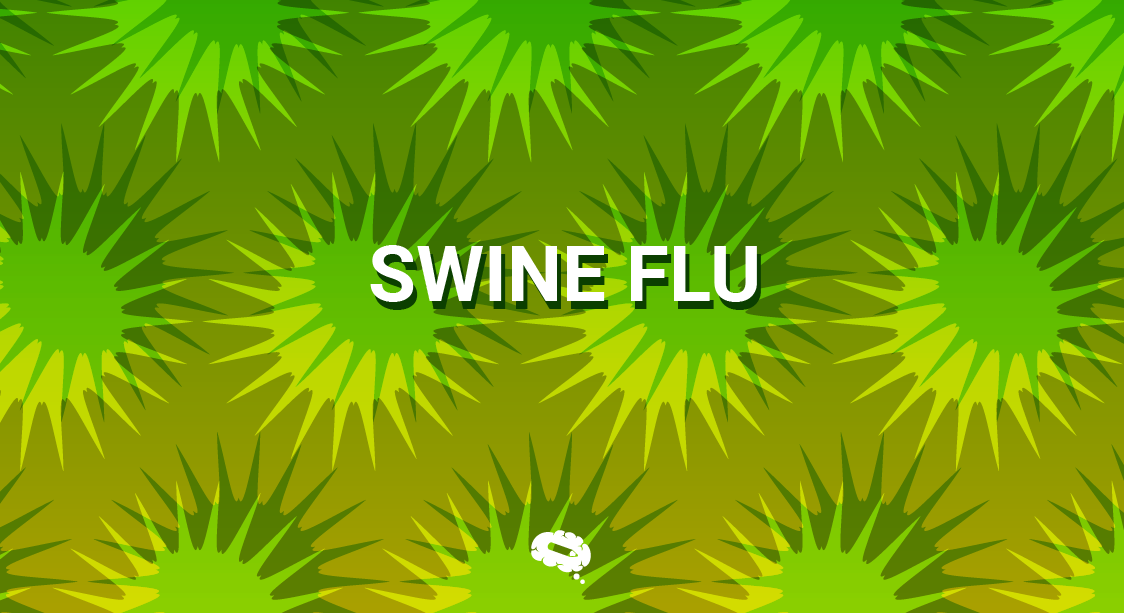Swine flu, a type of influenza that primarily affects pigs but can also infect humans, has made headlines several times over the past few decades. While it shares many characteristics with seasonal flu, swine flu can pose distinct challenges due to its ability to spread rapidly and unpredictably.
First identified in 2009, the H1N1 strain of swine flu led to a global pandemic, raising concerns and prompting widespread health responses. Today, understanding swine flu is crucial not only for managing its impact but also for preventing future outbreaks. This article delves into the key aspects of swine flu—exploring its symptoms, prevention strategies, and treatment options—to help you stay informed and prepared.
What is Swine Flu?
Swine flu, or H1N1 influenza, is a respiratory illness caused by the H1N1 strain of the influenza virus. This virus is a subtype of the influenza A virus, which is known to affect pigs, hence the name “swine flu.” It first gained widespread attention in 2009 when it caused a global pandemic, but it has since become a regular part of the seasonal flu mix.
Definition and Origins
This particular strain is notable for its ability to jump between species, primarily infecting pigs but also spreading to humans. The H1N1 virus is classified under the broader category of influenza A viruses, which are known for their tendency to mutate and cause seasonal flu outbreaks.
The origins of the H1N1 virus are believed to be a combination of human, avian, and swine influenza viruses. It emerged as a new strain in pigs before circulating among the human population. The 2009 H1N1 pandemic was sparked when the virus began spreading rapidly among humans, leading to widespread illness. The virus spreads primarily through respiratory droplets when an infected person coughs or sneezes, but it can also be transmitted by touching surfaces contaminated with the virus and then touching the face.
Symptoms
Symptoms of swine flu are similar to those of seasonal flu and can include:
- Fever or chills
- Cough
- Sore throat
- Runny or stuffy nose
- Muscle or body aches
- Headache
- Fatigue
In some cases, individuals may also experience gastrointestinal symptoms like nausea, vomiting, or diarrhea, though these are less common.
While the symptoms of swine flu can closely resemble those of seasonal influenza, there are some distinctions. Swine flu may lead to more severe symptoms or complications in certain individuals, such as young children, elderly adults, and those with underlying health conditions. Additionally, the rapid onset of symptoms and the potential for higher rates of hospitalization during the 2009 pandemic were notable. Differentiating swine flu from regular flu often requires medical evaluation, particularly if symptoms are severe or unusual for a given flu season.
How Swine Flu Spreads
Understanding how swine flu spreads is crucial for implementing effective prevention strategies. The virus’s ability to transmit between individuals and from animals to humans plays a key role in its dissemination.
Methods of Transmission
Swine flu primarily spreads from person to person through respiratory droplets. When an infected person coughs, sneezes, or talks, tiny droplets containing the virus can be expelled into the air and inhaled by others nearby. The virus can also spread by touching surfaces or objects contaminated with these droplets and then touching the mouth, nose, or eyes. This mode of transmission is similar to how seasonal flu spreads, making it important to practice good hygiene and avoid close contact with infected individuals.
While human-to-human transmission is the primary method of spreading swine flu, animals, particularly pigs, play a significant role in the virus’s lifecycle. Swine flu originally circulates among pigs, where it can mutate and reassort with other influenza viruses. Humans who are in close contact with pigs, such as farmers or veterinarians, can contract the virus directly from these animals. However, once the virus has adapted to spread among humans, the primary mode of transmission becomes human-to-human. Nonetheless, monitoring and controlling influenza in animals remain important to prevent potential cross-species transmission and the emergence of new viral strains.
Prevention and Protection
Preventing the spread of swine flu involves a combination of individual and community measures. By adhering to recommended practices, you can reduce your risk of infection and help protect those around you.
Vaccination
Vaccination is a key defense against swine flu. The H1N1 vaccine, available in both injectable and nasal spray forms, helps the immune system recognize and combat the virus. Annual flu vaccines often include protection against H1N1, as well as other influenza strains. Vaccination not only reduces your personal risk of contracting the virus but also helps limit its spread in the community, contributing to herd immunity.
Accessibility to the swine flu vaccine varies globally. In many developed countries, vaccines are widely available through public health programs and healthcare providers. However, in some regions, logistical and financial barriers may limit access. International organizations and health agencies work to improve vaccine distribution and affordability, aiming to reach underserved populations and provide equitable protection. If you’re traveling or living abroad, check local health resources for information on vaccine availability and recommendations.
Hygiene Practices
Regular handwashing with soap and water is one of the most effective ways to prevent the spread of swine flu and other infectious diseases. Aim to wash your hands for at least 20 seconds, especially before eating, after using the restroom, or after being in public spaces.
If soap and water aren’t available, opt for an alcohol-based hand sanitizer containing at least 60% alcohol. Hand sanitizers can help kill germs on your hands and reduce the likelihood of spreading the virus, though they are not a substitute for handwashing when possible.
To prevent the spread of respiratory droplets, cover your mouth and nose with a tissue or your elbow when you cough or sneeze. Dispose of tissues immediately and wash your hands afterward. This simple practice helps reduce the transmission of the virus to others.
Community Practices
Effective community support is crucial during a swine flu outbreak. This includes providing resources for those who are ill, such as access to medical care and medication, as well as support for those who need to quarantine or isolate. Community health initiatives, information dissemination, and support networks can help ensure that affected individuals receive the care they need while minimizing the impact on public health. Social distancing can be helpful, when having an outbreak.
Social distancing involves maintaining a physical distance from others to reduce the spread of the virus. During outbreaks, it is advisable to avoid large gatherings, stay at least six feet away from others, and limit close contact, especially in crowded or enclosed spaces.
Treatment and Care
Effective treatment and care for swine flu involve both medical interventions and home care strategies. Understanding the options available and knowing how to manage the illness can significantly impact recovery and well-being.
Medical Treatment
Antiviral medications can be effective in treating swine flu, especially when administered early in the course of the illness. The primary antiviral medications prescribed for swine flu are:
- Oseltamivir (Tamiflu): This medication helps reduce the severity and duration of flu symptoms by inhibiting the virus’s ability to replicate.
- Zanamivir (Relenza): This inhaled medication works similarly to oseltamivir by preventing the virus from spreading in the respiratory tract.
These antiviral drugs are most effective when taken within the first 48 hours of symptom onset. They can also be used as a preventive measure for those at high risk of complications, such as pregnant women, young children, and individuals with chronic health conditions. Be sure to adhere to your healthcare provider’s instructions for dosage and duration.
Seeking Medical Help and When to Do So
If you suspect you have swine flu or experience symptoms, consult a healthcare provider for a proper diagnosis and treatment plan. Seek medical attention promptly if you or someone in your care:
- Develops severe symptoms, such as difficulty breathing, persistent chest pain, or confusion.
- Experiences worsening symptoms despite initial treatment.
- Belongs to a high-risk group, such as the elderly, pregnant women, or individuals with chronic health conditions.
Early intervention can help manage symptoms effectively and reduce the risk of complications.
Home Care
Caring for someone with swine flu at home involves supportive measures to ease symptoms and prevent the spread of the virus. Key steps include:
- Isolation: Keep the ill person in a separate room if possible and minimize contact with others. Use separate utensils and personal items.
- Monitoring Symptoms: Keep track of the person’s symptoms and temperature. Consult a healthcare provider if symptoms worsen or do not improve.
- Cleaning and Disinfection: Regularly clean and disinfect surfaces that may be contaminated, such as doorknobs, countertops, and bathroom fixtures.
Rest and hydration are essential components of recovery from swine flu. Encourage the person to:
- Rest: Adequate rest helps the body fight the infection and recover more quickly. Ensure the patient gets ample rest and refrains from strenuous activities.
- Stay Hydrated: Drink plenty of fluids, such as water, herbal teas, and clear broths, to prevent dehydration and help the body recover. Avoid caffeinated and alcoholic beverages, which can contribute to dehydration.
Providing comfort and supportive care at home can help manage symptoms and aid in a faster recovery. Always consult with healthcare professionals if you have concerns about managing the illness at home.
Supporting Each Other
Supporting one another during a swine flu outbreak involves fostering a compassionate and informed community. By working together and leveraging available resources, we can enhance both individual and collective resilience.
Building a Supportive Community
Open communication is essential in a supportive community. Encourage sharing accurate information about swine flu to dispel myths and reduce fear. Public forums, social media platforms, and community meetings can facilitate dialogue and provide updates. Listening to concerns, offering reassurance, and providing clear information about prevention and treatment can help people feel supported and less isolated.
Sharing resources and information helps ensure that everyone has access to the tools they need to stay healthy. This includes:
- Educational Materials: Distributing brochures, flyers, or online resources about swine flu symptoms, prevention, and treatment.
- Practical Support: Sharing information about local vaccination clinics, free or low-cost health services, and available community support groups.
- Personal Networks: Leveraging personal connections to offer practical help, such as delivering groceries or medications to those who are quarantined or ill.
By working together and supporting each other, communities can effectively manage the impact of swine flu and foster a sense of solidarity.
Accessing Services
Access to affordable healthcare is crucial during an outbreak. Options to consider include:
- Government Programs: Many countries have public health programs that provide free or subsidized vaccinations and treatments for influenza. Check with local health departments for available services.
- Health Insurance: For those with health insurance, verify coverage for flu-related medical expenses, including doctor visits, antiviral medications, and hospitalizations.
- Non-Profit Organizations: Some non-profit organizations offer financial assistance or free health services for those in need. Research local and national organizations that may provide support.
Community healthcare centers and helplines offer valuable support during health crises. These resources can help:
- Healthcare Centers: Community health clinics often provide affordable care, including flu vaccinations and treatment, and can offer guidance on managing symptoms and accessing additional services.
- Helplines: Health helplines, operated by public health agencies or non-profit organizations, can provide information on symptoms, treatment options, and where to find medical care. They can also assist with navigating healthcare systems and connecting with local resources.
By utilizing these services, individuals and families can receive the care and support they need, ensuring better health outcomes and reducing the strain on healthcare systems.
Long-Term Health Consequences
While most people recover from swine flu without long-term effects, some individuals may experience lingering health issues. These complications can include:
- Respiratory Issues: Persistent coughs, shortness of breath, or decreased lung function may occur, especially in those who have severe cases or pre-existing respiratory conditions.
- Chronic Fatigue: Some individuals may experience prolonged fatigue or weakness long after the acute phase of the illness has passed.
- Neurological Effects: Rarely, swine flu can lead to neurological complications such as encephalitis or Guillain-Barré Syndrome, which can affect muscle strength and coordination.
Management and Follow-Up Care
For those experiencing long-term effects, ongoing medical care and management are crucial. Recommendations include:
- Regular Check-Ups: Routine medical evaluations to monitor and manage any persistent symptoms or complications.
- Specialist Referrals: Consultation with specialists, such as pulmonologists for respiratory issues or neurologists for neurological symptoms.
- Rehabilitation: Physical therapy or occupational therapy may be beneficial for those recovering from severe complications.
Psychological and Social Impact
Mental Health Considerations
The psychological impact of swine flu can be significant, especially for those who experienced severe illness or prolonged recovery. Common mental health issues include:
- Anxiety and Depression: The stress of illness, recovery, or the potential impact on daily life can lead to mental health challenges.
- Post-Traumatic Stress: Severe cases or hospitalizations may lead to post-traumatic stress or anxiety disorders.
Addressing mental health is an important aspect of recovery. Available resources include:
- Counseling and Therapy: Access to mental health professionals who can provide support and coping strategies.
- Support Groups: Connecting with others who have experienced similar challenges can provide comfort and shared experiences.
- Community Programs: Local health departments or non-profits may offer mental health resources and support programs.
Online Scientific Design Tool For Your Classes, Speeches, Papers, And Much More
The Mind the Graph platform is designed to bridge the gap between complex scientific ideas and accessible visual representation. Whether for educational purposes, public presentations, or academic publications, the platform simplifies the creation of high-quality visuals and fosters clear, impactful scientific communication. Sign up for free and start your designs.

Subscribe to our newsletter
Exclusive high quality content about effective visual
communication in science.










